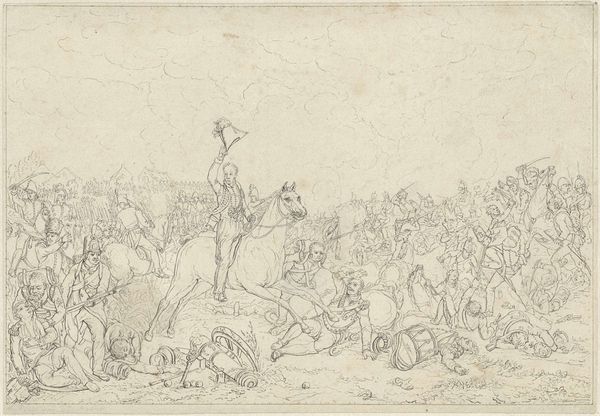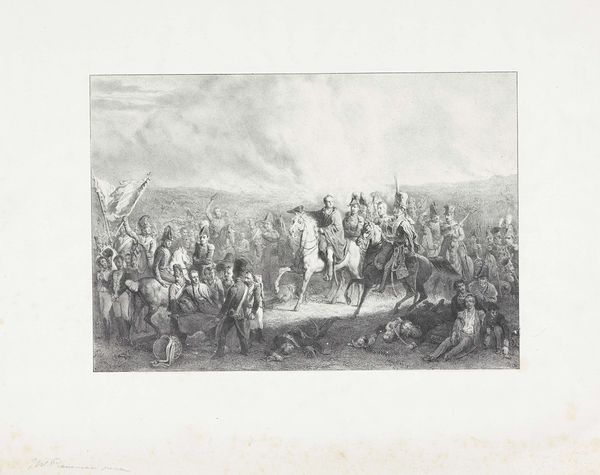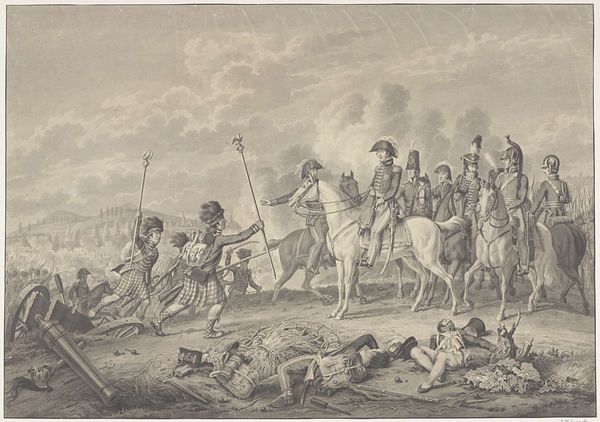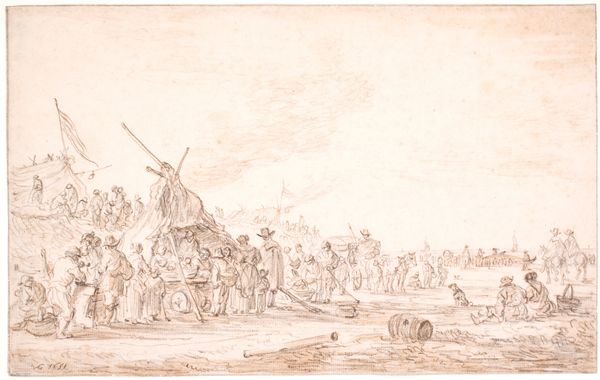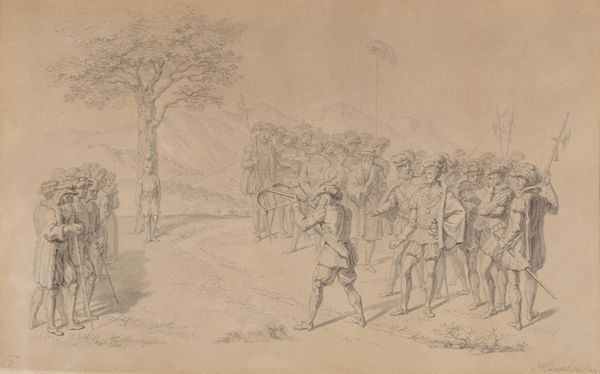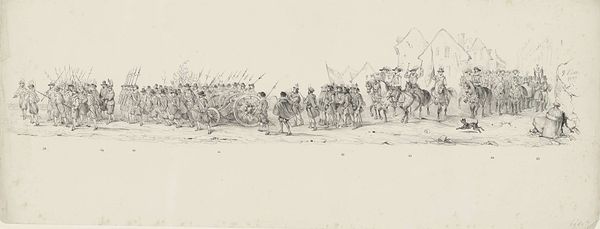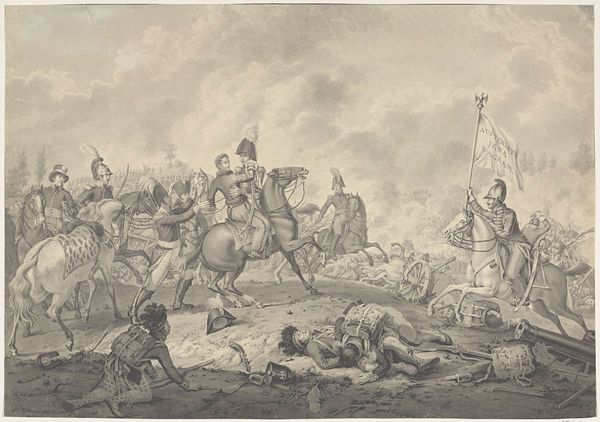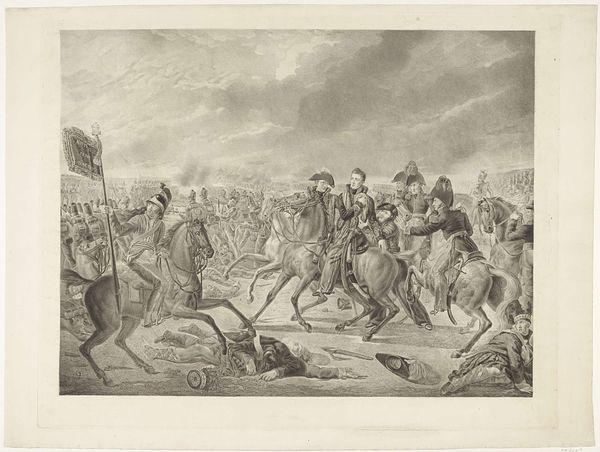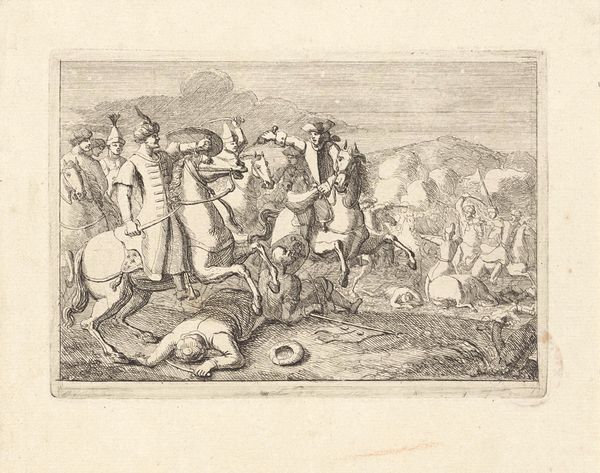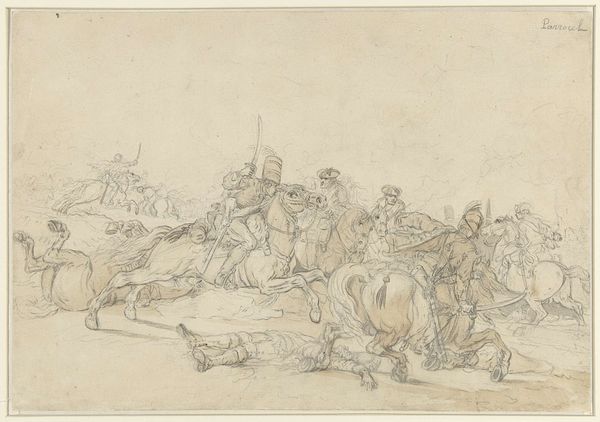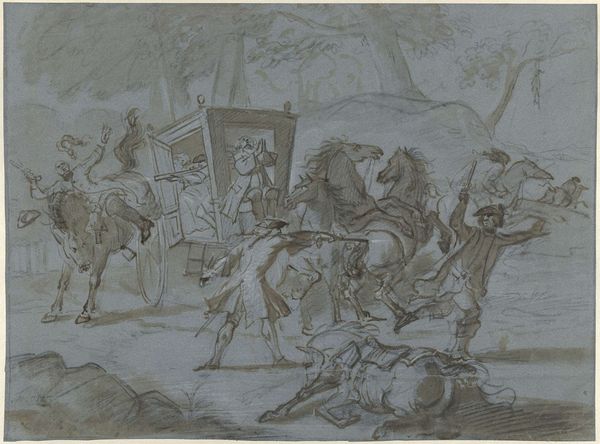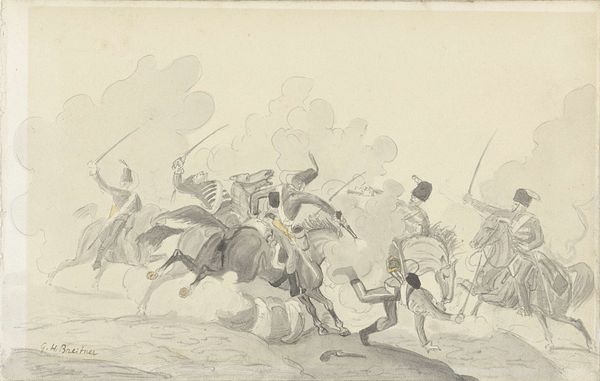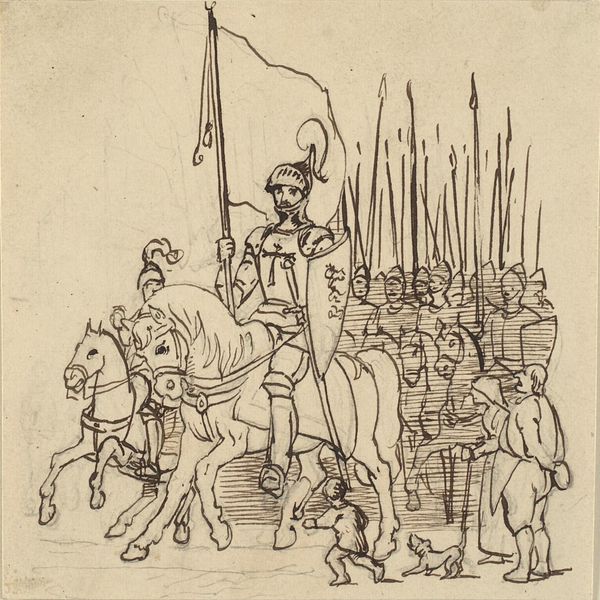
drawing, pencil
#
drawing
#
narrative-art
#
figuration
#
romanticism
#
pencil
#
history-painting
#
academic-art
Dimensions: height 237 mm, width 296 mm
Copyright: Rijks Museum: Open Domain
Editor: So, here we have Jan Willem Pieneman's "The Battle of Waterloo," created between 1789 and 1853. It’s a pencil drawing housed in the Rijksmuseum. It seems to be sketching a chaotic scene of battle aftermath. What do you see in this piece, looking at it from your perspective? Curator: Well, beyond the immediate depiction of war, I see a strategic use of imagery that serves the political and social climate of the time. Pieneman positions the victors prominently, but even more importantly, how are those victors being positioned in relationship to the suffering surrounding them? Editor: I see what you mean. The leaders on horseback seem almost detached from the casualties on the ground. Is this detachment intentional? Curator: Precisely. Pieneman worked in a period where art served to consolidate national identity. Consider the intended audience – those who commissioned, viewed, and interpreted this work. It wasn’t necessarily about historical accuracy. What social messages do you think this piece promotes or reinforces? Editor: It makes the leaders look strong and resolute, perhaps suggesting a divinely ordained victory or a 'necessary' cost. It glosses over the grim reality, reinforcing a heroic narrative. But what about its later reception? Did the public buy into that narrative? Curator: The narrative would be shaped by social context; public reception is not uniform, it can often be highly contested. Critically engaging with work such as this, helps us to challenge the authority of dominant historical narratives, and also examine how images help consolidate particular world views and belief systems. Editor: That makes me see how powerful the act of curation and reinterpretation can be! Thanks for opening up those different aspects. Curator: Indeed. By questioning the 'why' behind the 'what,' we gain a greater awareness of the powerful role images play in society.
Comments
No comments
Be the first to comment and join the conversation on the ultimate creative platform.
